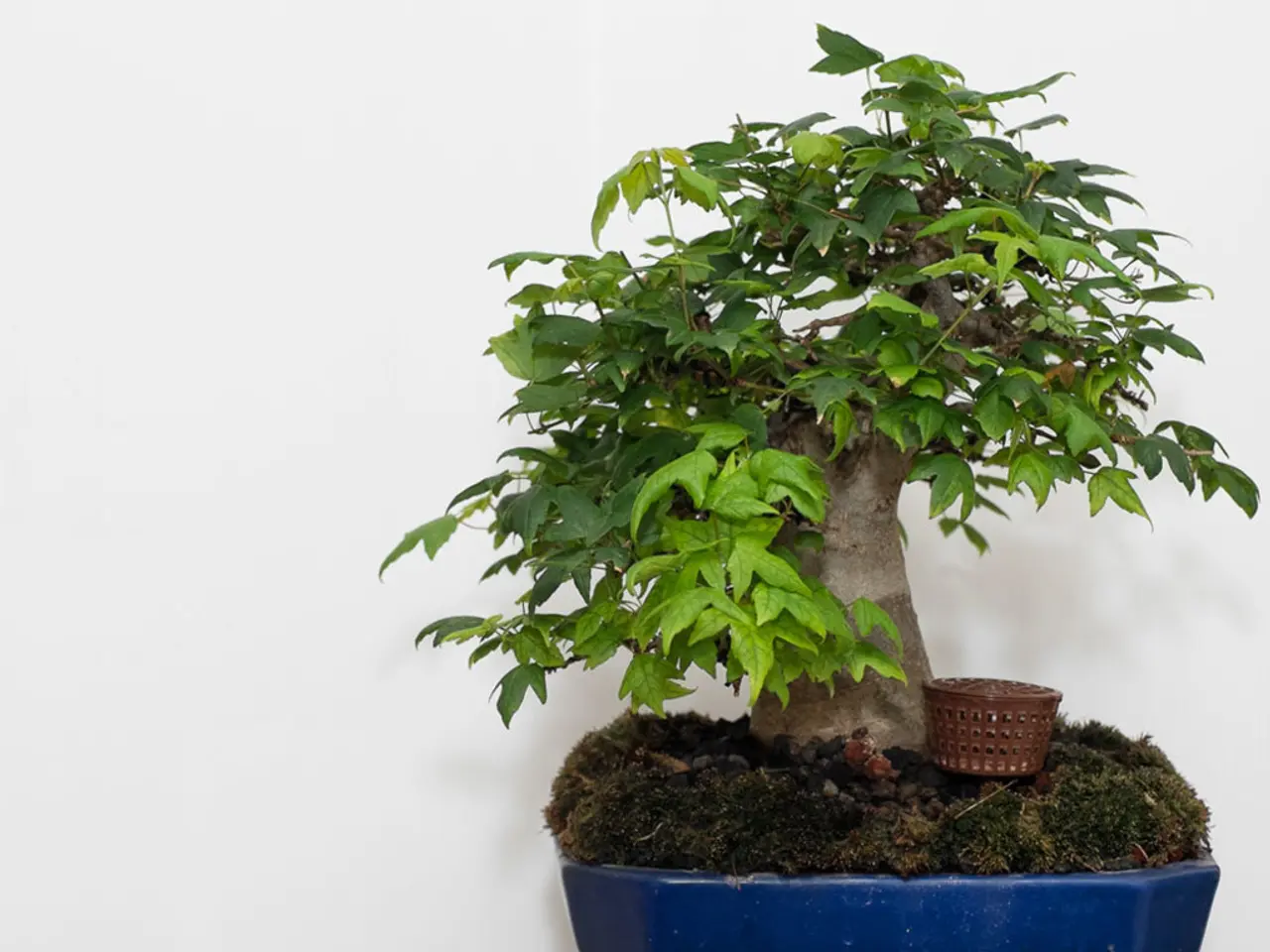Self-made Bonsai Soil: Formulas and Guide to Crafting Your Own Blend
Bonsai trees thrive in a carefully crafted soil mix that optimizes drainage, aeration, water retention, and nutrient supply. The ideal mix usually consists of approximately 50–60% inorganic materials and 40–50% organic materials, though specifics may vary by bonsai species and climate.
The Role and Benefits of Components
Inorganic Components
Inorganic components, such as akadama, pumice, lava rock, calcined clay, grit, and pine bark, are essential for bonsai soil. They provide excellent drainage and aeration, preventing waterlogging and root rot, maintain soil structure and resist compaction, and allow excess water to flow through, preventing sogginess. Typical proportions are about half or slightly more of the mix.
Organic Components
Organic components, like compost, pine bark, and coir, retain moisture and improve water retention without waterlogging, provide a slow release of nutrients as they decompose, supporting long-term tree health, and encourage beneficial soil microorganisms that improve nutrient availability. Organic particles usually make up about 40–50% of the mix to keep moisture but avoid excessive dampness.
Impact on Key Soil Properties
| Property | Effect of Inorganic Components | Effect of Organic Components | |-----------------|----------------------------------------------|---------------------------------------------------| | Drainage | Enhances fast, free drainage to prevent root rot, avoids water retention | Slightly slows drainage by retaining some moisture | | Aeration | Creates air pockets to keep roots oxygenated | Organic particles improve soil texture but can compact over time | | Water retention | Low to moderate retention to avoid soggy soil | Improves moisture holding capacity, important for nutrient uptake | | Nutrient supply | Minimal direct nutrients, mostly inert | Slowly releasing nutrients improve soil fertility |
Example Mixes
- Conventional bonsai soil: 50% akadama (inorganic clay), 25% pumice (gritty inorganic), 25% organic pine bark or composted bark.
- Succulent/cactus focus mix: Higher proportion (~70% inorganic like pine bark, calcined clay, montmorillonite clay) to maximize drainage; lower organic content to minimize moisture retention.
Adapting to Climate and Tree Needs
- In cool and temperate regions, a soil mix that prioritizes moisture retention, aeration, and nutrient supply is suitable, with a balanced pH to support ideal growth and development.
- In hot and humid climates, bonsai trees require a soil mix that balances moisture retention with excellent drainage to prevent root rot and guarantee ideal growth.
- In dry and arid environments, a soil mix that prioritizes exceptional drainage, water conservation, and heat tolerance is necessary to support the survival of bonsai trees.
- As the tree matures, a more balanced blend that promotes aeration and drainage becomes essential, allowing the roots to breathe and the tree to thrive.
- During the early stages, a mix rich in organic matter and nutrients fosters robust root development and supports the tree's rapid growth.
Maintaining Your Bonsai Soil
- It's generally recommended to start fresh with a new, customized mix to guarantee prime health and vigor for your miniature tree when re-potting.
- When to replace bonsai soil mix depends on factors like tree species, pot size, and local climate. As a general rule, replace the mix every 2-5 years, or when you notice decreased drainage, nutrient depletion, or root bound conditions.
- Regularly inspect your bonsai's soil, monitoring moisture levels and adjusting as needed.
- When handling pests or diseases in your bonsai, inspect your trees regularly, isolate infected trees, and use organic pest control methods to promote a healthy, thriving ecosystem.
- During maintenance, attend to the unique needs of your bonsai species, adapting your watering schedule accordingly as the seasons change. A well-crafted mix will exhibit a balance of water retention and drainage, allowing the roots to breathe while maintaining adequate hydration.
[1] Bonsai Soil Mix: The Ultimate Guide [2] Bonsai Soil: How to Choose the Right Soil for Your Bonsai [3] The Importance of Soil in Bonsai [4] Succulent Bonsai Soil Mix: The Ultimate Guide
- The choice of soil composition for bonsai trees significantly influences their lifestyle, as it determines key properties such as drainage, aeration, water retention, and nutrient supply.
- Properly balancing fashion-and-beauty and home-and-garden elements in one's living space can create a harmonious environment that fosters overall well-being, much like how crafting an ideal bonsai soil mix supports the long-term health of miniature trees.
- When planning a trip (travel), researching the native soil types and climates of destinations can provide valuable insights into the food-and-drink preferences and local cuisines, allowing travelers to fully immerse themselves in the culture and traditions of the regions they visit.




